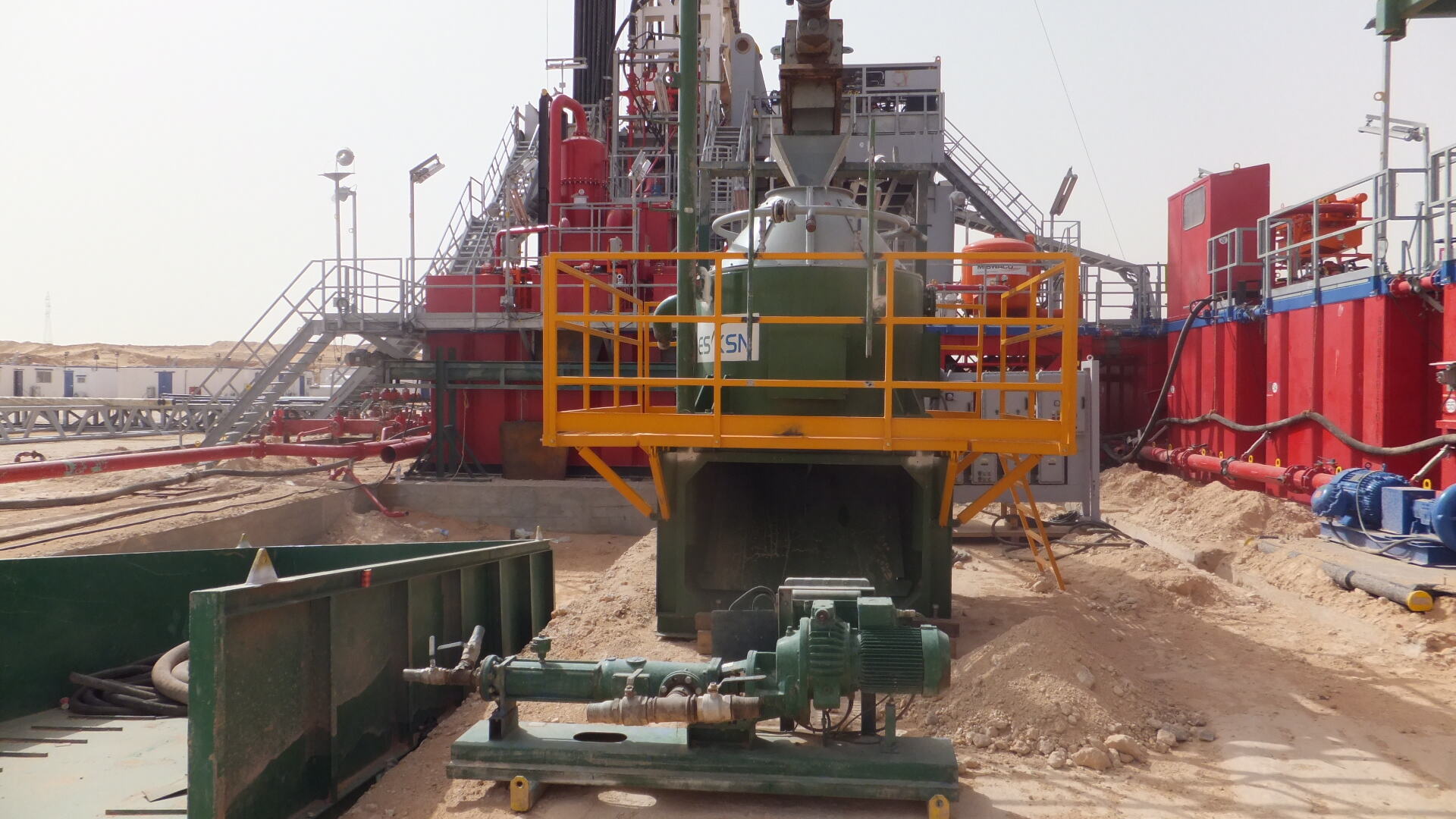Тұрақты дамуды қамтамасыз ететін Бурлау ақыны басқару
Мұнай және газ өнеркәсібі қоршаған ортаны қорғау тұрғысынан дұрыс басқарумен қазба қалдықтары қатар жұмыс істеу тиімділігін сақтау қажеттілігіне барынша қысым түсіреді. Әлемдік энергия сұранысы өсе берген сайын, бұрғылау қалдықтарын басқару мәселесі бұрынғыдан да маңызды болып отыр. Бұл кең ауқымды нұсқаулық компаниялардың қоршаған ортаға тигізетін әсерін азайта отырып, бұрғылау қалдықтарымен жұмыс істеу процесстерін тиімділеудің заманауи әдістері мен ең жақсы тәжірибелерін қарастырады.
Бұрғылау қалдықтарын басқарудың тиімділігінің негізгі элементтері
Қалдықтарды бөлудің заманауи технологиялары
Заманауи бөрілу операциялары тілімді ажырату технологияларына сүйенеді, сонымен қатар бұрғылау қалдықтарын тиімді өңдеу үшін тақтатас сүзгілер, центрифугалар және термиялық десорбция қондырғылары қолданылады. Бұл технологияларды стратегиялық түрде енгізу арқылы компаниялар қалдық көлемін едәуір азайтып, қайта пайдалану үшін құнды материалдарды қалпына келтіре алады.
Ең соңғы ажырату жабдықтары нақты өнімділікті қамтамасыз ететін және оператордың қатысуын азайтатын автоматтандырылған бақылау жүйесін қамтиды. Бұл ақылды жүйелер қалдықтардың құрамына сәйкес параметрлерді реттей алады, бұрғылау процесі барысында тұрақты ажырату сапасын сақтауға көмектеседі.
Тұрақты өңдеу әдістері
Қоршаған ортаның тұрақтылығы қазба қалдықтарын басқарудың негізгі тұғыры болып табылады. Қазіргі замақты өңдеу әдістері экологиялық із қалдырмай, ресурстарды қайта өңдеуге бағытталған. Биологиялық өңдеу процесстері, соның ішінде биоремедиация және компосттау органикалық қосылыстарды табиғи жолмен ыдырату қабілетіне ие болғандықтан кең тарады.
Химиялық тұрақтандыру техникасы да жаңартылды, соңғы өнімдері тұрақты және қауіпсіз болатын ластануды байланыстыруға арналған жаңа құрамдар пайда болды. Бұл өңдеулерді пайдалану арқылы зиянды қалдықтарды қайта пайдалануға болады, мысалы, жол құрылысы немесе құрылыс толтырғыштары үшін.

Қалдықтарды өңдеудің орындалу орнын оптимизациялау
Алмалы-салмалы өңдеу шешімдері
Мобильді өңдеу қондырғыларының дамуы ұңғылау қалдықтарын басқаруды түбегейлі өзгертті. Бұл портативті жүйелер ұңғылау орындарына дейін күрделі өңдеу мүмкіндіктерін әкеледі, қалдықтарды ұзақ қашықтыққа тасымалдау қажеттілігін жояды. Мобильді қондырғылар бір мезгілде әртүрлі қалдық ағындарын өңдей алады, тасымалдаумен байланысты қоршаған ортаның қауіптерін азайта отырып, икемділік пен шығындарды үнемдеуді қамтамасыз етеді.
Қазіргі заманғы мобильді жүйелерге құрастырмалы конструкциялар енгізілген, оларды жобалау талаптарына сәйкес жылдам орнатып, кеңейтуге болады. Бұл икемділік орналасқан жері мен жобаның көлеміне қарамастан тиімді қалдық өңдеуді қамтамасыз етеді және қоршаған ортаны қорғау талаптарын қатаң сақтауды қамтамасыз етеді.
Реал уақыттың іздейтін системалары
Сандық технологиялар компаниялардың қазбалық қалдықтарды басқару операцияларын бақылау және басқару тәсілдерін түбегейлі өзгертті. IoT датчиктері мен кеңейтілген аналитикалық платформалар қалдық көлемі, құрамы және өңдеу тиімділігі туралы үздіксіз деректер береді. Бұл нақты уақыт режиміндегі ақпарат операторларға шешім қабылдауды жылдамдатуға, өңдеу процесстерін тиімділеуге және мәселелер күрт артпас бұрын оларды болдырмауға мүмкіндік береді.
Жасанды интеллект пен машиналық оқыту алгоритмдерін интеграциялау техникалық қажеттіліктерді болжауға және процесстерді жетілдіру мүмкіндіктерін анықтауға көмектеседі. Осындай ақылды жүйелер операцияларды тиімді орындауға және экологиялық реттеулерге үнемі сәйкес келуін қамтамасыз етеді.
Циклдік экономика принциптерін енгізу
Қалдықтарды азайту стратегиялары
Прогрессивті компаниялар бұрғылау қалдықтарын басқару тәсілдеріне дөңгелек экономика принциптерін енгізуде. Бұған алдын ала жоспарлау және бұрғылау сұйықтарын таңдау арқылы қалдықтардың пайда болуын азайту үшін операцияларды жобалау кіреді. Бірнеше рет қайта өңдеуге болатын дамытылған бұрғылау сұйықтарының жүйелері қалдық көлемін азайтады және әрі қарай оңтайлы жұмыс істеуін қамтамасыз етеді.
Қалдықтарды азайту бұрғылау процесі барысында материалдарды таңдау мен қолдану тәжірибелеріне дейін созылады. Тиісті сорттау протоколдарын енгізу және персоналды ең жақсы тәжірибелерге үйрету арқылы ұйымдар қалдықтардың пайда болуын және онымен байланысты шығындарды әлдеқайда азайта алады.
Ресурстарды қалпына келтіру және қайта пайдалану
Қазіргі заманғы бұрғылау қалдықтарын басқару барысында қалдық материалдардан құндылық алуға көңіл бөлінуде. Қайта өңделген бұрғылау сұйықтарын қайта пайдалануға болады, ал өңделген қатты заттар құрылыс немесе жер күйін қалпына келтіру жобаларында қолданылуы мүмкін. Бұл тәсіл қалдықтарды тозақтау шығындарын азайтудың ғана емес, бұрын қалдық ретінде қарастырылған заттардан табыс әкелетін кірістердің жаңа көздерін жасауға мүмкіндік береді.
Бұрғылау қалдықтарынан құнды компоненттерді, соның ішінде сирек кездесетін жер металдары мен пайдалы минералдарды алу үшін жаңа технологиялар үнемі пайда болып жатыр. Бұл жетістіктер ресурстарды қайта өңдеу бойынша жаңа мүмкіндіктерді ашып қана қоймай, сонымен қатар тұрақты қалдықтарды басқару тәжірибелерін дамытуды жалғастырып келеді.
Жиі қойылатын сұрақтар
Бұрғылау қалдықтарын басқарудың негізгі қиыншылықтары қандай?
Негізгі қиыншылықтар қоршаған ортаны қорғау талаптарын орындау, әртүрлі қалдық ағындарын тиімді басқару, тазалау шығындарын бақылау, қауіпті қалдықтардың дұрыс жойылуын қамтамасыз ету және әрі қарай өндірістік үрдістердің тиімділігін сақтау болып табылады. Климаттық жағдайлар мен қашық орындар қалдықтарды басқару процесстерін күрделендіре алады.
Кәсіпорындар бұрғылау қалдықтарын тасымалдау шығындарын қалай азайта алады?
Кәсіпорындар тасымалдау шығындарын азайту үшін қалдық көлемін азайту технологияларын пайдалану, мобильді өңдеу қондырғыларын қолдану, қалдықтарды орынды тазалау шешімдерін енгізу және мүмкіндігінше жергілікті жою немесе қайта пайдалану нұсқаларын дамыту арқылы тиімді бөліп алу технологиялары арқылы тиімді басқаруға болады.
Бұрғылау қалдықтарын тазалау бойынша соңғы жаңалықтар қандай?
Соңғы жаңалықтарға термиялық десорбция жүйелері, нақты нақты уақытта бақылау платформалары, әлдеқайда әсер ететін биологиялық емдеу әдістері және жаңа химиялық тұрақтандыру технологиялары жатады. Сонымен қатар, өнертапқыш интеллект пен автоматтандыру процесстерін басқару мен емдеу тиімділігін арттырып жатыр.

